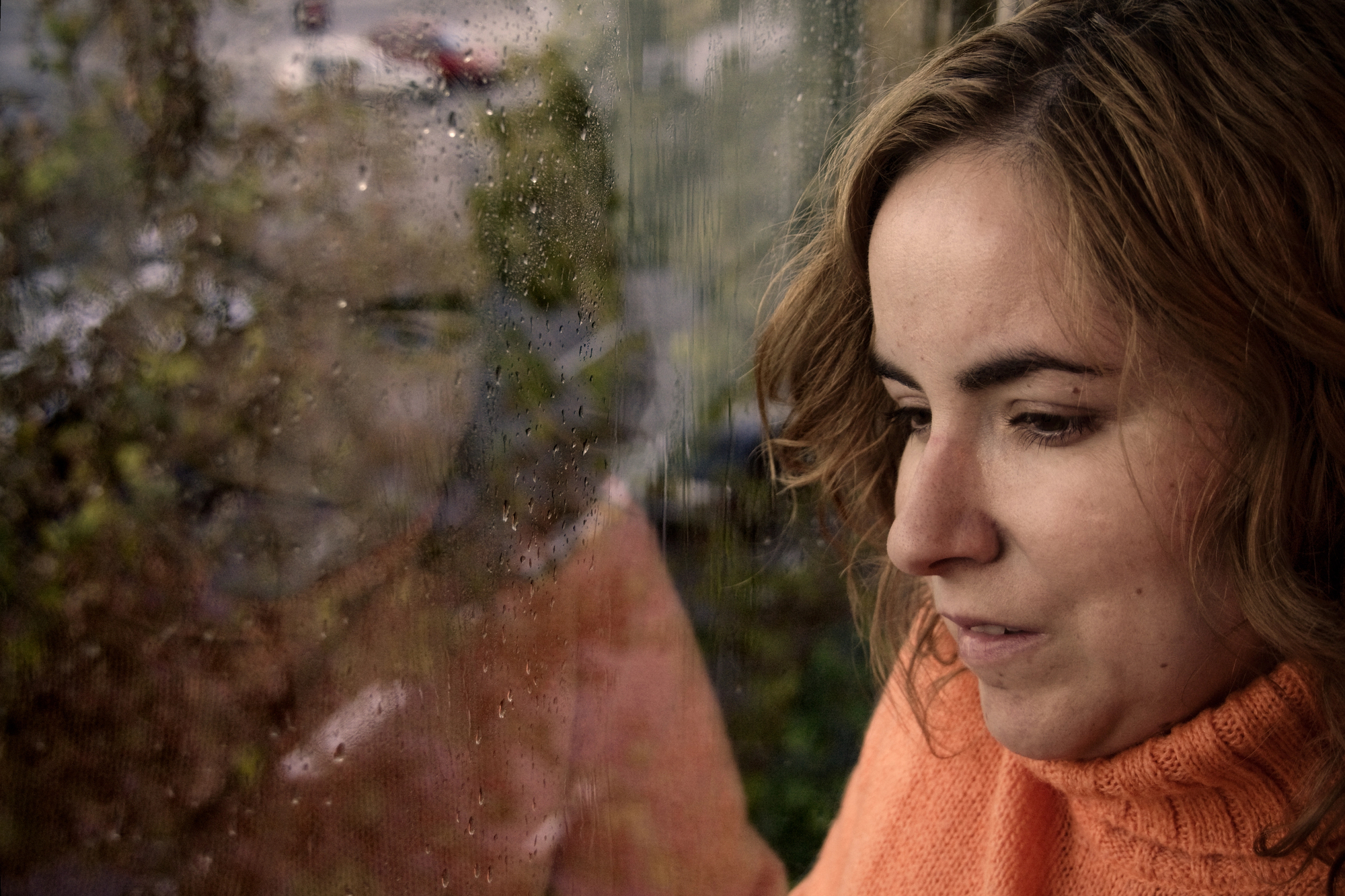Autism in women is more common than people realize.

Autistic women often navigate life under the radar, feeling different throughout their lives but not understanding why. Their experience is overshadowed by outdated stereotypes of autism, which leaves them searching for answers to explain why they don’t seem to fit in.
Let’s dive into the reasons behind this phenomenon, shedding light on the diverse ways autism presents across genders and challenging us to broaden our perspective.
1. Diagnostic criteria have historically been based solely on male presentation.

The early studies that shaped our understanding of autism primarily involved boys, creating a prototype of autism that emphasized traits commonly observed in males, such as obvious repetitive behaviors and intense interests in mechanical subjects. This has resulted in diagnostic criteria that do not always accurately capture how autism presents in women and girls.
Consequently, many healthcare professionals still hold outdated beliefs about autism, with some even thinking it only affects boys. Autistic women often find their experiences don’t align with these male-based diagnostic checklists. Their autistic traits may be more subtle or manifest differently (which we’ll cover in a minute), leading to misinterpretation or oversight by professionals who aren’t up to date with the latest training and research.
2. Gender expectations mean women are taught to internalize their autistic traits from a young age in order to be “good girls”.

From a very early age, societal expectations heavily shape the way girls navigate the world. For autistic girls, these expectations teach them to constrain their natural tendencies and push them to internalize their autistic traits. The pressure to be “good girls” – quiet, compliant, and socially adept – leads many autistic girls to suppress their authentic selves. They learn to bottle up their sensory discomfort, mask their social differences, and silence their unique perspectives.
The mantra of “be nice, be polite, don’t make a fuss” becomes a powerful force, driving autistic girls to internalize their struggles rather than express them outwardly. As a result, their autism becomes less visible to the outside world, making it harder for parents, teachers, and healthcare professionals to recognize their needs.
This internalization not only complicates the path to diagnosis but can also lead to significant emotional and psychological stress as these girls grow into women, constantly trying to fit into a mold that wasn’t designed for them.
3. They often become very skilled at masking (to the detriment of their mental and physical health).

As we’ve mentioned, due to the pressure on girls to behave a certain way, autistic females are often more likely to observe and mirror neurotypical social behaviors and suppress their autistic traits. For example, forcing eye contact despite it being extremely uncomfortable, learning how to make small talk, trying to be less direct when communicating, etc. This is known as “masking” or “camouflaging” and it often starts unconsciously from a very young age, without the child even realizing they are doing it.
However, this adaptation comes at a huge cost. The constant effort to present a neurotypical facade is emotionally and mentally draining, often leading to autistic burnout and mental health struggles. Moreover, their “success” in blending in often means their authentic selves and unique needs go unrecognized, leaving them without the support they truly require.
4. Girls and women often have different special interests to autistic boys and men.

Train schedules and obscure facts are not the only hallmarks of autism, despite what some people believe. Autistic women often have special interests that fly under the radar because they seamlessly blend in with societal expectations. A passionate collector of vintage fashion or a fierce lover of animals might be seen as just another enthusiast, while her deep knowledge and intense focus go unrecognized as autistic traits.
These interests, though often equally intense, may not raise eyebrows in the same way traditionally “male” special interests do. As a result, a key indicator of autism in women often goes unnoticed, further complicating the identification process.
5. Their sensory differences may be less outwardly apparent.

The sensory world of an autistic woman can be a roller coaster of intense experiences, yet these internal struggles often remain invisible due to societal pressures placed on women from a very young age. As we’ve discussed, girls are taught to be “good,” quiet, and not to make a fuss, leading many autistic women to internalize their sensory discomfort rather than express it outwardly.
While a boy’s visible reaction to sensory overload will get noticed, a girl desperately seeking refuge from fluorescent lights and background chatter often suffers in silence. These hidden sensory challenges can significantly impact daily life, from work performance to social interactions. Without understanding and support, many autistic women navigate these intense experiences alone, their struggles dismissed or misunderstood by those around them, all because they’ve learned to mask their discomfort to meet social expectations.
6. They internalize their emotional dysregulation due to gender expectations.

Societal gender norms significantly influence how autistic women manage their emotions as well. Girls are taught to be “nice,” “polite,” and to avoid causing scenes. These expectations lead many autistic women to internalize their emotional struggles, presenting a calm exterior while grappling with intense inner turmoil.
This learned behavior of “keeping it together” in public masks the very real challenges they face in emotional regulation. Unlike boys, who are allowed more leeway to express frustration or overwhelm outwardly, girls are often expected to maintain composure. Consequently, autistic women tend to implode rather than explode, their distress going unnoticed by others. Without visible signs of struggle, family members, friends, and even healthcare professionals often fail to recognize their need for support, perpetuating the cycle of silent suffering imposed by gender expectations.
7. Girls and women may stim less or stim in less obvious ways.

Stimming, short for self-stimulatory behavior, is a common autistic trait involving repetitive movements or sounds that help regulate sensory input or manage emotions. While often associated with more visible behaviors like hand-flapping or rocking, autistic women and girls frequently engage in subtler forms of stimming that can go unnoticed.
Autistic females might twirl their hair, fidget with jewelry, or doodle intricate patterns. They might engage in mental stimming by silently reciting favorite phrases or running through lists in their heads. Some might even stim through “socially acceptable” activities like yoga or dancing.
The difference in stimming behaviors between genders isn’t innate but again, often stems from societal expectations and learned behaviors. Girls are under more pressure to appear well-behaved and may consciously or unconsciously modify their stims to be less noticeable. This adaptation, while helping them blend in, can make their autistic traits less apparent to observers.
8. Their differences and struggles often don’t become as apparent until adolescence.

The autistic traits of many girls often remain hidden until adolescence, when the social landscape shifts dramatically. As social communication becomes more complex and nuanced, autistic girls may find themselves struggling to adapt. The ability to read between the lines, understand sarcasm, and navigate intricate social hierarchies can prove challenging.
The increased emphasis on conformity during this period can amplify the stress of masking for autistic girls and hormones also play a role. It’s often at this point that parents, teachers, or the girls themselves often begin to recognize that something is different. This delayed recognition can provide answers but also means many autistic girls have spent years struggling silently, missing out on early support and validation.
9. Their differences and struggles become even more heightened during perimenopause and menopause.

Perimenopause and menopause can intensify the challenges faced by autistic women. Hormonal fluctuations often disrupt carefully constructed coping mechanisms, leading to increased meltdowns, anxiety, or sensory overload. Physical symptoms like hot flashes can exacerbate sensory sensitivities, while sleep disturbances deplete energy reserves needed for masking.
Cognitive changes associated with menopause can compound existing executive functioning challenges. For some, this transition becomes a catalyst for seeking a diagnosis, finally putting a name to lifelong differences. While this late-life recognition can be bittersweet, it offers an opportunity for self-understanding and developing more accommodating lifestyles in the post-menopausal years.
10. Media and popular culture perpetuate harmful and outdated stereotypes about autism.

Hollywood’s narrow lens has long distorted the public’s view of autism. From Dustin Hoffman’s portrayal in “Rain Man” to Jim Parsons’ Sheldon Cooper in “The Big Bang Theory,” popular culture has painted autism with broad, often inaccurate strokes. These depictions, while memorable, present a limited and stereotypical view of autism that rarely captures the diverse experiences of autistic individuals, especially women.
Such portrayals perpetuate the myth that all autistic people are savants with extraordinary mathematical abilities or socially awkward geniuses in STEM fields. This narrow representation not only overshadows the vast spectrum of autistic experiences but also reinforces gender biases. The lack of diverse, nuanced autistic characters in media, particularly women, contributes to the public’s limited understanding of how autism presents across genders. Consequently, many autistic women find themselves unable to relate to these popular portrayals, further complicating their journey of self-discovery and acceptance.
11. Autism is often misdiagnosed as a mental health condition in women.

Traits that point clearly to autism are often misinterpreted as anxiety, depression, personality traits and even Borderline Personality Disorder in women. A woman’s unique approach to social interactions might be labeled social anxiety, while her sensory experiences could be dismissed as simple fussiness.
These misidentifications not only delay proper support but can also lead to unhelpful and unnecessary interventions. It’s a frustrating detour on the path to self-discovery and acceptance, leaving many women feeling misunderstood and invalidated.
12. Co-occurring mental health conditions get in the way.

Having said that autism is often misdiagnosed in women, it’s also true that autism rarely travels alone. Many autistic individuals, women included, experience co-occurring conditions that can muddy the waters of identification. Anxiety, depression, ADHD, or eating disorders might take center stage, overshadowing the underlying autism.
These co-occurring conditions can create a confusing symptomatic picture, leading healthcare providers down the wrong path. Unraveling this complex web requires a nuanced understanding of how autism interacts with other conditions – an understanding that’s often lacking in traditional diagnostic settings.
13. Intersectionality and cultural factors play a role.

Autism doesn’t exist in a vacuum. It’s shaped by the complex interplay of race, ethnicity, socioeconomic status, and cultural norms. For women of color or those from non-Western cultures, the path to identification can be even more fraught with obstacles.
Cultural expectations around behavior, communication, and gender roles can mask or amplify autistic traits. Economic barriers may limit access to diagnostic services, while biases in healthcare can lead to misinterpretation of autistic behaviors. This intersection of identities adds layers of complexity to an already challenging process of understanding and acceptance.
Finally…

The underdiagnosis (and misdiagnosis) of autism in women is a complex issue rooted in historical biases and societal expectations. If this article resonates with your experiences or those of someone you know, we encourage you to explore further. Seek out resources, connect with autistic communities, and consider professional evaluation. Understanding and embracing your neurotype can lead to greater self-acceptance and support.









